Our Hires
Find out about our extensive hire services.
Tell Me MoreFlexibility is key as this well-known regional live music venue undergoes a complete audio upgrade of its sound system with Autograph Sound
Cambridge Junction’s first performance space was opened in 1990 on the site of the city’s former Cattle Market, with two further spaces being added in 2005. J1 is the original and largest space with a capacity of 850 and features mainly live music, while J2 is a 220-capacity seated theatre and J3 is a compact, multipurpose space.
In common with so many comparable venues, The Junction presents an extremely diverse array of entertainment and, as usual, this places extended demands on the technical infrastructure required to deliver them to audiences. For obvious reasons, it’s also essential that such venues keep pace with the quality of delivery that modern audiences expect and so the Junction has recently undergone a full revamp of the audio systems in its two main spaces, in partnership with Autograph Sound.
Autograph has a long-standing relationship with the venue and the conversation was originally about replacing their mixing consoles – this led organically to a venue-wide upgrade project in which Autograph created an integrated solution including consoles, loudspeaker systems, a venue-wide Dante network, stage racks, and monitors. The overall delivery, installation, and commissioning was phased as the Junction had to continue as a busy working venue throughout, with completion in summer 2023.
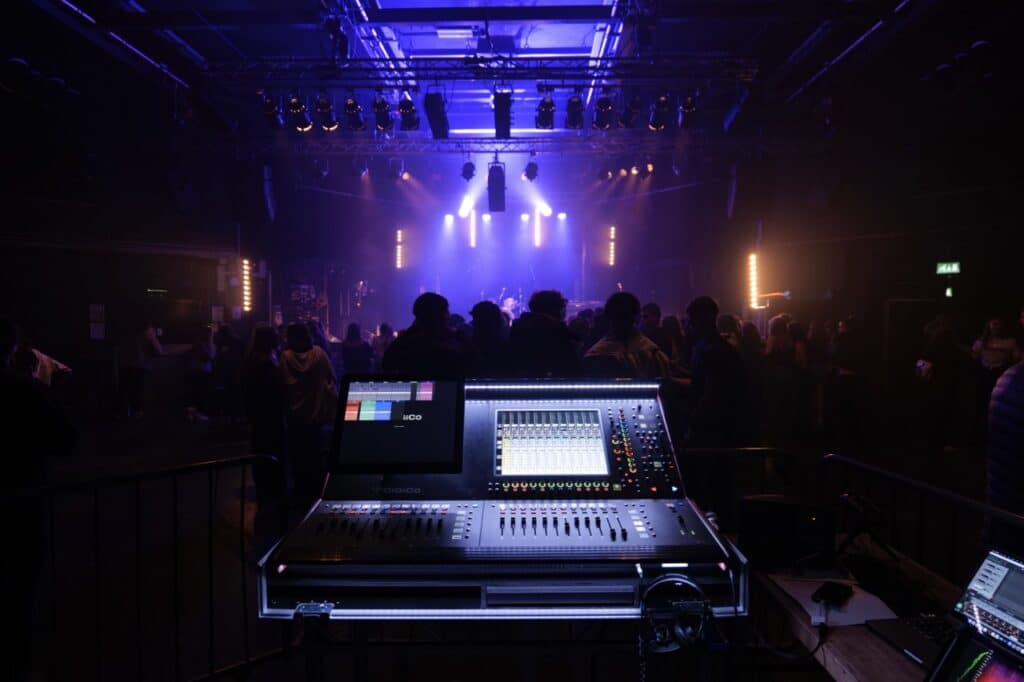
Two new DiGiCo Quantum 225’s with DQ Racks were supplied and installed by Autograph, along with a with Waves system at FOH in J1. All associated hardware was designed into custom-made wheeled racks to allow equipment to be easily relocated throughout the venue as needed.
Mark Noble was one of Autograph’s engineering team at Cambridge and comments, “The Quantum 225’s were chosen as they were the latest product from DiGiCo, using some enhanced features familiar to visiting engineers – Cambridge Junction wanted to ensure they were offering the latest technology to make the best the long-term investment.”
“The 72-input channel capacity is ideal for the venue’s requirements as many engineers can convert or load their existing show files on to these consoles and be up and running easily. By installing DMI-Dante cards we integrated the consoles via the Dante network with direct control of the DQ Racks, so managing gain sharing between consoles and multi-track recordings is very simple. The matrix outputs from the FOH console feed the main PA system via Dante and d&b’s DS10 network bridge, while various combinations of outputs have been built into R1 snapshots, so visiting engineers can bring their own DiGiCo show file complete with Waves plug-ins and be ready to work quickly with minimal changes.”
“The flexibility to offer this without needing to hire in extra equipment for visiting engineers, as well as improving the palette of tools available to in house engineers, all at low latency, made the new Quantum 225s an obvious choice. They are very light in weight with a small footprint so fitted into the monitoring space on stage and due to their portability they can be easily moved around each space as required – with the added advantages of Dante connectivity this allows future expansion of console networks across multiple venues.”
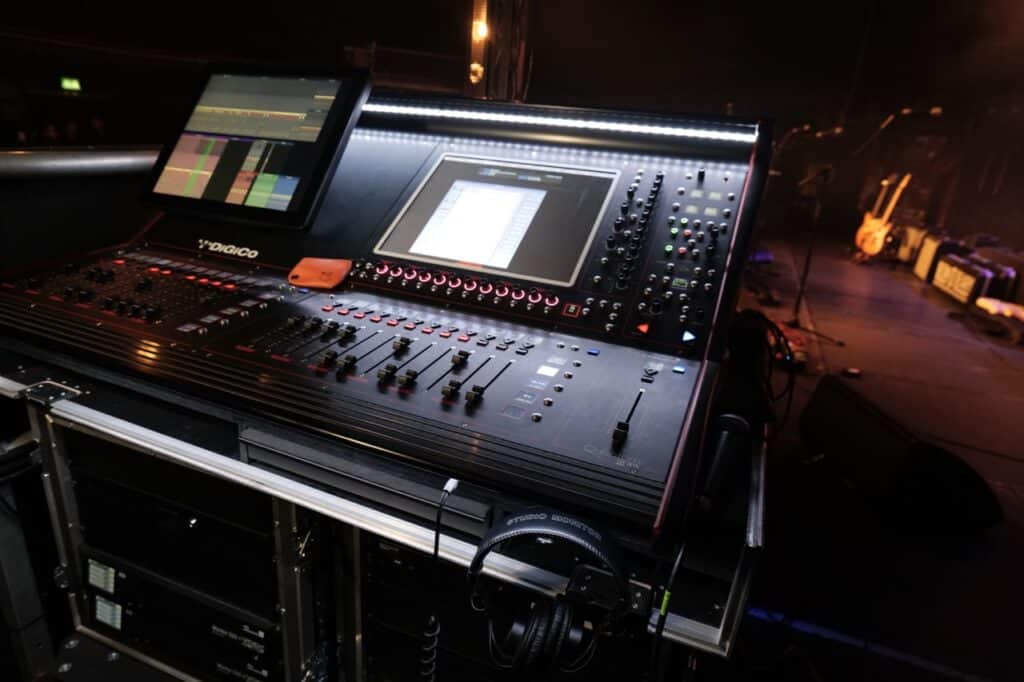
The choice of loudspeaker system for J1 was driven by several factors, one being the venue’s existing d&b inventory which had served them well for years (some of which has been repurposed). The size and shape of the room had provided some historical challenges, notably that the proximity of the main FOH loudspeakers to the stage had meant excessive on-stage bleed and thus the need for stage monitors to be excessively loud to compensate – another common problem in mid-sized venues.
Following a demo of d&b’s new fully-cardioid XSL system it became clear that this was the ideal solution to that ongoing problem, as its inbuilt directivity would significantly reduce on-stage levels while providing plentiful SPL and coverage for the rest of the room. The design created by Autograph for J1 includes eight XSLi12 cabinets as main L&R, two Vi10P and one Vi10P for outfills and centre downfill respectively and six KSL-GSUB subwoofers. The whole system is powered from eight d&b 40D amplifiers and uses a DS10 Audio Network Bridge to interface between the d&b amplifiers and the new Dante network. The existing flying points and loudspeaker infrastructure were retained and repurposed.
In practice, the theoretical advantages of the new d&b system have proved their practical and operational worth. The full-bandwidth directivity control of the XSL enclosures has radically reduced on-stage levels, taking pressure off the stage monitors – the new rig has far more headroom than the old one and even though the hangs are still relatively small, by utilising d&b’s Array Processing, Autograph were able to even out the room tonality from front to back.
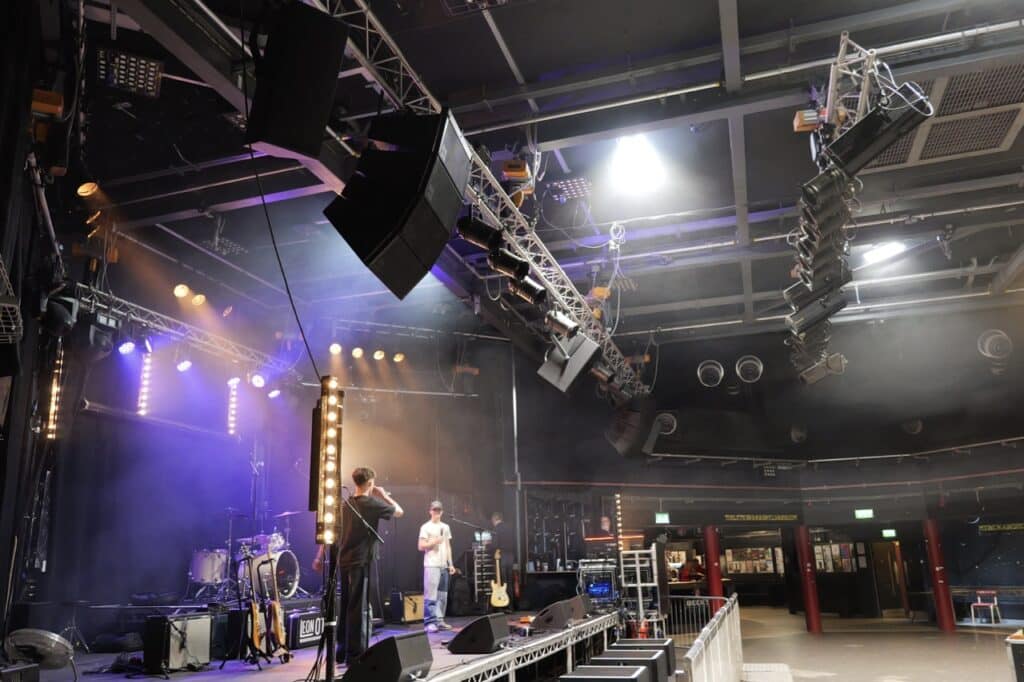
The KSL-GSUB subwoofers are configured as a sub array, allowing for a much smoother low frequency response across the room than the previous arrangement. Also the low-frequency extension of the XSL means that the system can be driven either with KSL-GSUBS in standard mode or infra, which gives the venue more flexibility when it comes to hosting different genres of event, especially club nights.
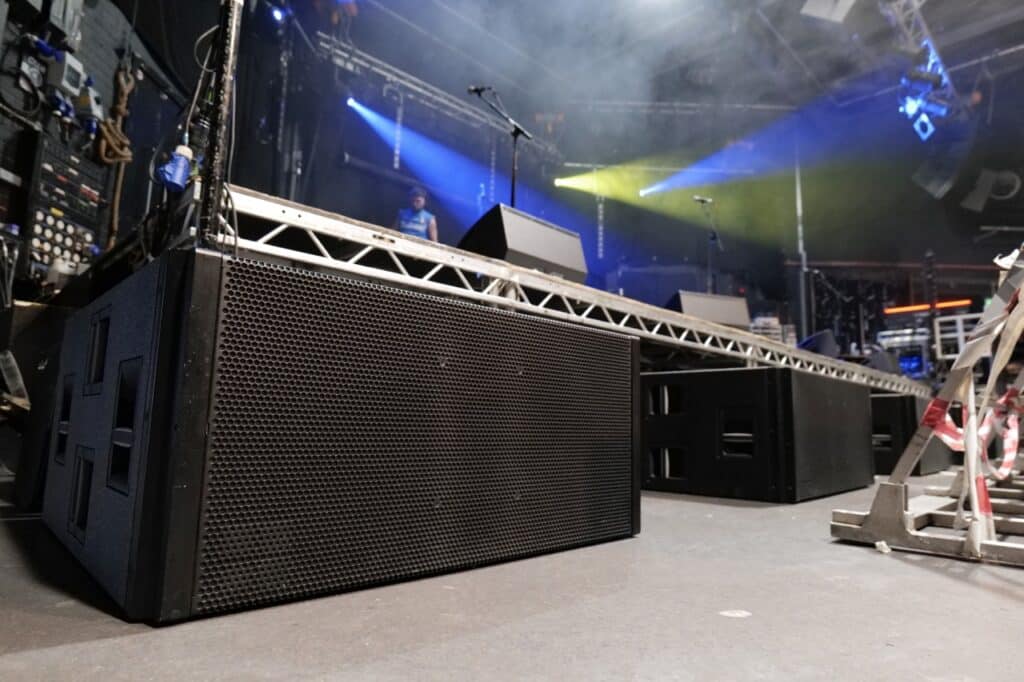
Mark Noble continues, “By utilising d&b’s software workflow we were able to further optimise the listening experience by using array processing and CPL, tools which the venue’s audio teams can access via R1 to suit the required programme setup. We have also provided a clean and simple set of user controls from which sound engineers can monitor, adjust and recall presets. This workflow was designed in consultation with the teams at the Junction.”
“The J1 infrastructure upgrade also included new custom-made data facility panels at FOH and monitor mix positions, linking back to the main amp room. These have been designed to present elegant pre-patched Dante Primary and Secondary networks (using Netgear Pro AV line switches) as well as control ports for other devices.”
“With J1 being used for a variety of live music events, a mojo barrier is required along the front of the stage. Naturally the sub array setup gave us the smoothest response and consistency across the space, but the depth of this setup was a delicate balance to ensure our system layout combined with the mojo barrier complied with the venue’s H&S operating requirements. We were able to re-visit some of the final desired sub positions in Array Calc to look at how we could compensate for these adjustments and the house team now have setup presets for this as well as L/R and central mono stacks – due to the efficiencies of KSL-GSUBS we were able to avoid any noticeable compromises to the system.”
Meanwhile, J2’s varied programme required a slightly different approach and the provision of a flexible auditorium audio system which can be reconfigured according depending on the style of show. The room format can change from theatre seated to fully standing, presenting theatre, comedy and spoken word through to live music and club nights.
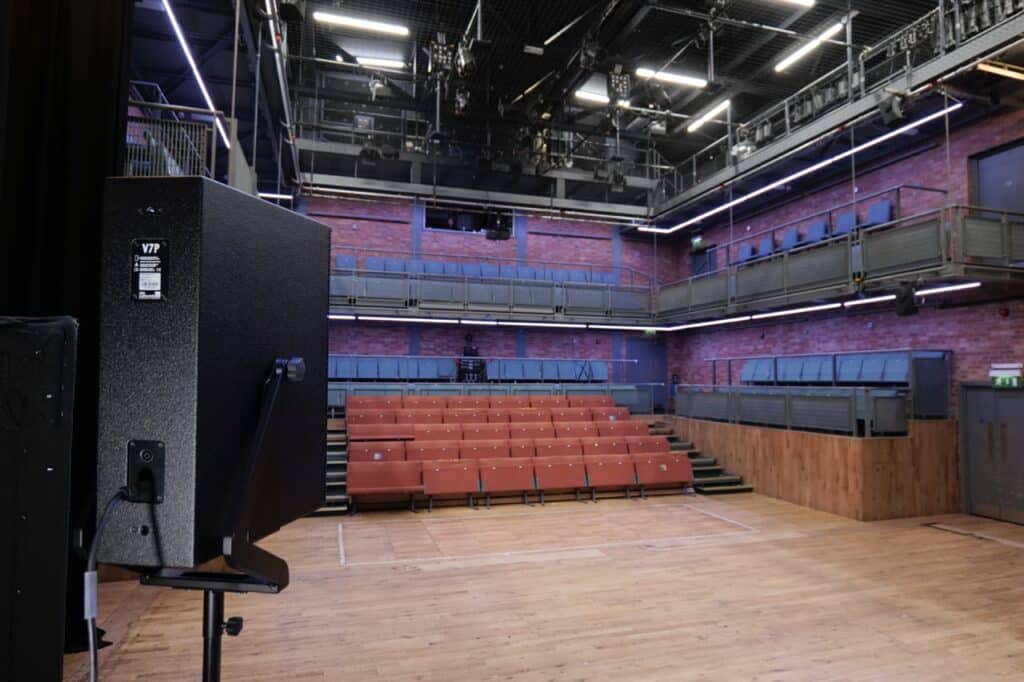
Thus Autograph’s design comprises a mixture of permanently-installed loudspeakers (d&b E8s driven by a single 30D amplifier) which cover the balconies and a portable stock which is deployed according to the event. This includes two V7P cabinets, four V-GSUBs and two more KSL-GSUBS, all driven by a pair of D40 amplifiers, once again linked to the in-house Dante network via a DS10 Audio Network Bridge. Again, Autograph provided a selection of presets to allow for any of the system variants to be ready for use quickly and easily.
The final part of the upgrade was the provision of a portable stage monitor system that is used wherever required, comprising 16 d&b MAX2 wedge monitors and D20 amplifiers, racked as one eight-channel and two four-channel systems for flexibility.
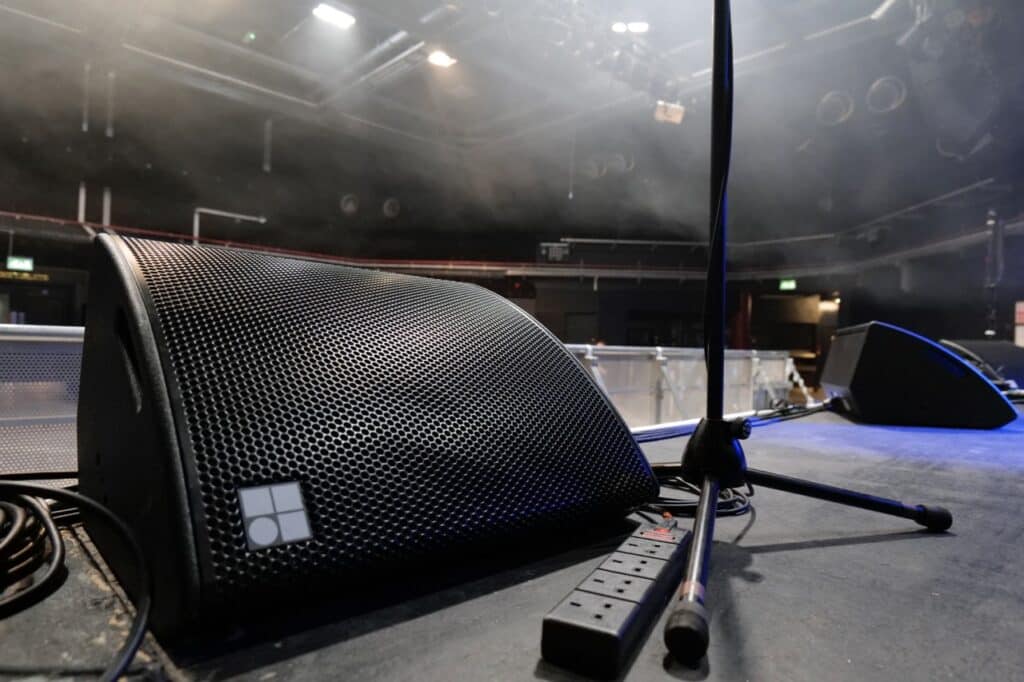
Mark Noble concludes, “Tuning and commissioning of the whole project was conducted in consultation with the team at Cambridge as we always strive to instill a sense of ownership over new systems. That partnership in terms of introducing new technologies and the right products for the project while working within budgets and numerous other constraints is key to how we work – it not only allows us to deliver what the venue needs but to do it in a collaborative and mutually-supporting way that always delivers best value to the client.”
Photo credit, all images – James Cumpsty